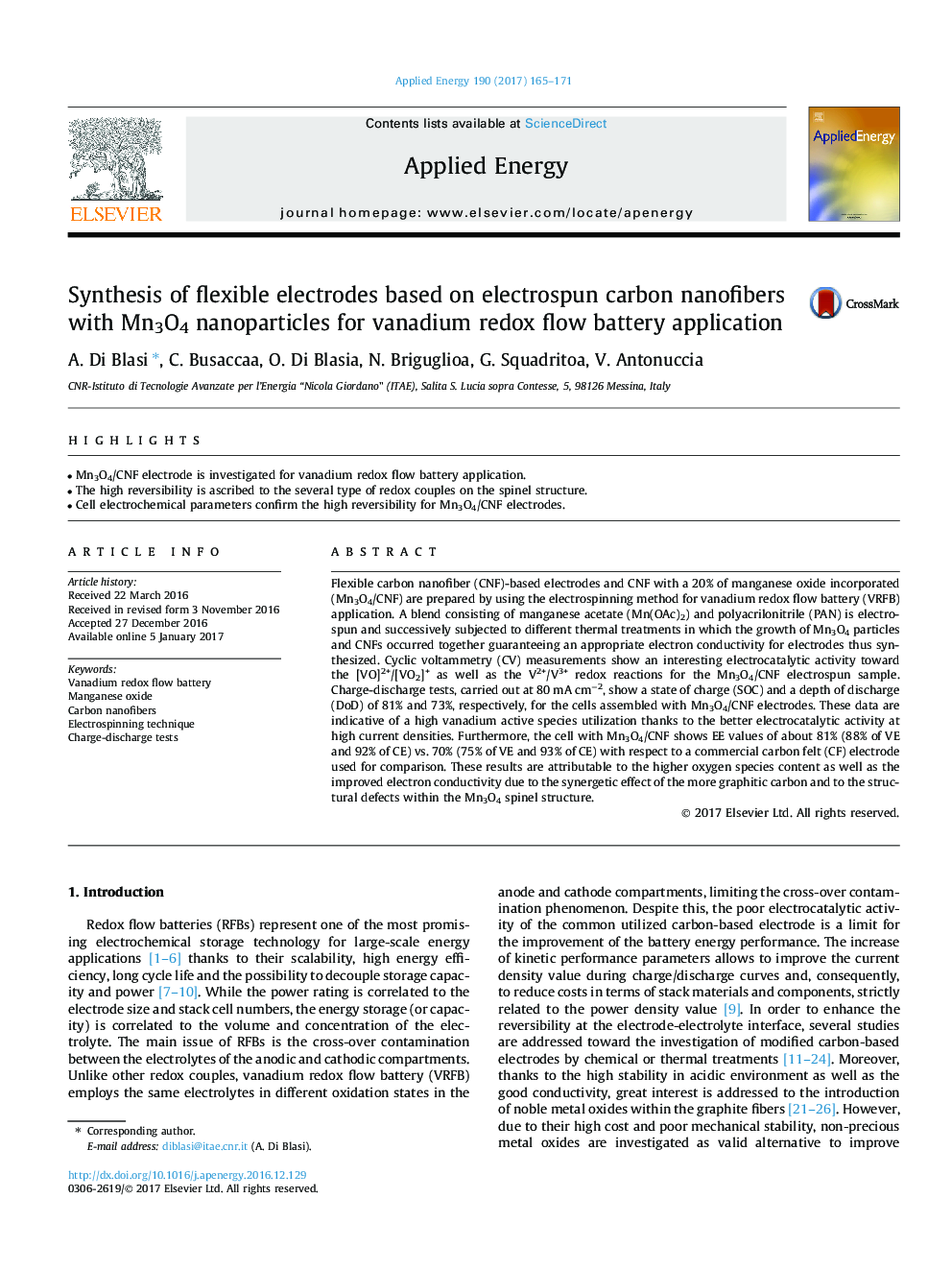| Article ID | Journal | Published Year | Pages | File Type |
|---|---|---|---|---|
| 6478462 | Applied Energy | 2017 | 7 Pages |
â¢Mn3O4/CNF electrode is investigated for vanadium redox flow battery application.â¢The high reversibility is ascribed to the several type of redox couples on the spinel structure.â¢Cell electrochemical parameters confirm the high reversibility for Mn3O4/CNF electrodes.
Flexible carbon nanofiber (CNF)-based electrodes and CNF with a 20% of manganese oxide incorporated (Mn3O4/CNF) are prepared by using the electrospinning method for vanadium redox flow battery (VRFB) application. A blend consisting of manganese acetate (Mn(OAc)2) and polyacrilonitrile (PAN) is electrospun and successively subjected to different thermal treatments in which the growth of Mn3O4 particles and CNFs occurred together guaranteeing an appropriate electron conductivity for electrodes thus synthesized. Cyclic voltammetry (CV) measurements show an interesting electrocatalytic activity toward the [VO]2+/[VO2]+ as well as the V2+/V3+ redox reactions for the Mn3O4/CNF electrospun sample. Charge-discharge tests, carried out at 80Â mAÂ cmâ2, show a state of charge (SOC) and a depth of discharge (DoD) of 81% and 73%, respectively, for the cells assembled with Mn3O4/CNF electrodes. These data are indicative of a high vanadium active species utilization thanks to the better electrocatalytic activity at high current densities. Furthermore, the cell with Mn3O4/CNF shows EE values of about 81% (88% of VE and 92% of CE) vs. 70% (75% of VE and 93% of CE) with respect to a commercial carbon felt (CF) electrode used for comparison. These results are attributable to the higher oxygen species content as well as the improved electron conductivity due to the synergetic effect of the more graphitic carbon and to the structural defects within the Mn3O4 spinel structure.
